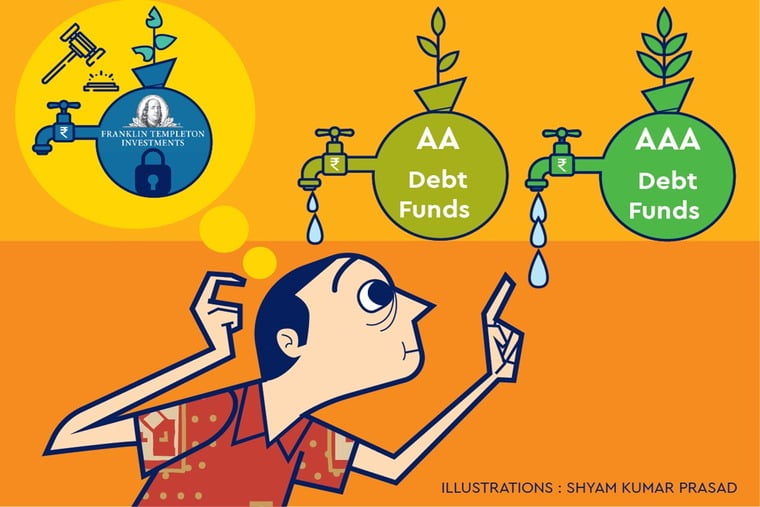Investors are now being selective in choosing credit-risk-oriented funds as liquidity in those papers rated ‘AA’ or lower is not as good as ‘AAA’.
It has been one year and four months since the shutdown of six debt funds by Franklin Templeton, on April 23, 2020. Not only were investors’ money stuck, there were concerns whether it would be recovered at all. While the AMC wanted to pay back gradually, the process was stalled by various court cases filed by concerned investors or other stakeholders.
Now when we look back at the episode, the developments were: (a) the Supreme Court assigned the task of liquidating instruments in the six portfolios and paying back to the investors to SBI Mutual Fund; (b) though SBI MF was expected to do it quickly enough, there was no deadline given, which is the positive part as it avoided fire sale or distress sale, which is what FT wanted to avoid in the first place; (c) as on date, 95% of the amount has been paid back to investors, taking the corpus size as on April 23, 2020 as the base data point; and (d) the balance amount in the portfolios is yet to be liquidated.
This data point of 95% is the total across the six funds, with individual fund-level payouts ranging from 84% to 108%. This payout has happened in six tranches in 2021, in February, twice in April, June, July and the latest as of 27 August 2021 NAV. The total pay-out till date, since February 2021, is Rs 23,999 crore out of Rs 25,215 crore on April 23, 2020. FT took the hard call at the cost of their reputation to avoid distress sales which ultimately preserved value for investors as seen in the returns generated by these funds in the post winding-up period.
What led to the issue?
There were two basic issues: lack of liquidity in the secondary market and unit-holders’ redemption pressure. The portfolios of these funds were mixed, with credit rating ranging from ‘AAA’ to ‘A’. The market for securities rated less than ‘AAA’ is not very liquid, and in the March-April 2020 phase, there was severe redemption pressure. With the two issues compounded, FT wound up those funds to avoid distress sales.
What is the learning for debt fund investors from the episode? Recurrence of this kind of event is unlikely, and hopefully, will never happen again. One takeaway of the FT event has been that henceforth a fund cannot be shut unilaterally, it requires unitholders’ consent. If an MF proposes winding up of a scheme, as per the Supreme Court, redemptions will be stalled as otherwise there would be a rush.
Of the two outcomes possible in case of a vote by unitholders, a ‘yes’ would lead to moderate sales and a ‘no’ would mean fire sale of the portfolio. In case your fund is facing a rush of redemptions, it may be an alarm—AUM of schemes can be tracked on a daily basis on the AMFI website. It may be difficult for investors to track, hence an adviser / distributor is required.
Choosing credit-risk funds
The event has also led to investors being selective in choosing credit-risk-oriented funds as liquidity in those papers, comprising approximately 65% of the portfolio rated ‘AA’ or lower, is not as good as ‘AAA’. Go for portfolios with a relatively better credit quality.
There was a phase when defaults were happening frequently, starting with IL&FS in September 2018. This happened through 2019 and an early part of 2020. There are few credit risk funds that survived without any default whereas a few had default issues. Defaults, thankfully, have not happened since March 2020.While several new regulations have been introduced to improve transparency of debt funds, it remains to be seen how they help investors take informed decisions on the way forward.
Source: https://www.financialexpress.com/money/mutual-funds/debt-funds-lessons-from-franklin-templeton-episode/2322870/


